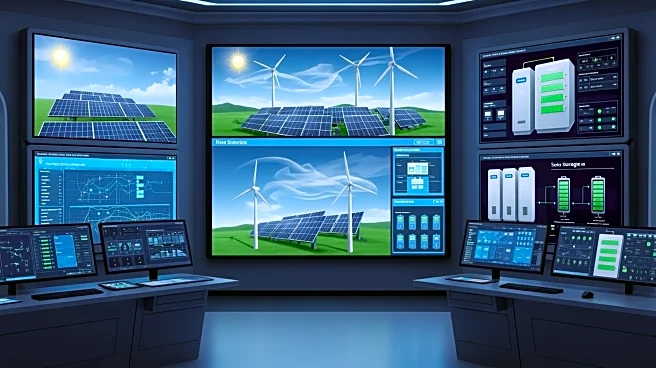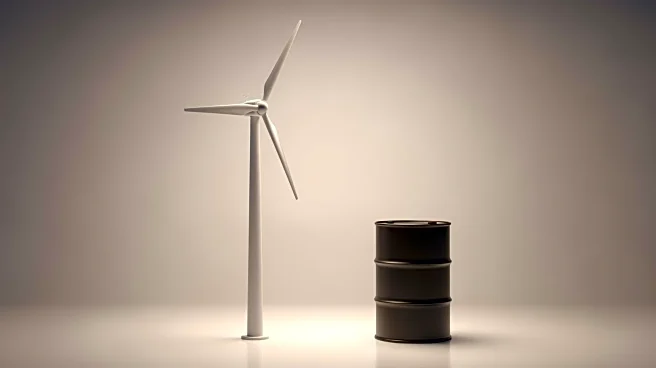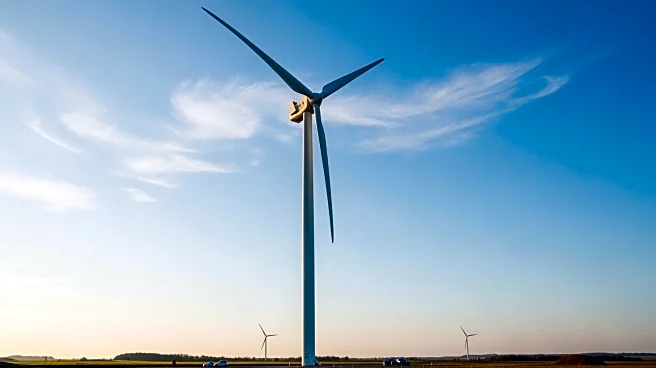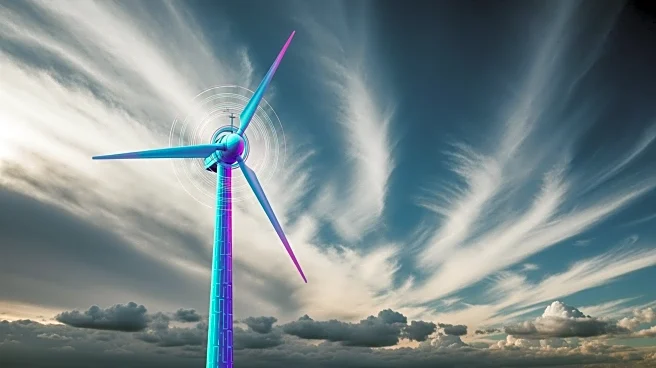What's Happening?
The Electric Reliability Council of Texas (ERCOT) is experiencing a significant increase in electricity demand, reaching record highs in the first nine months of 2025. ERCOT, which manages approximately 90% of Texas's electricity load, has seen the fastest
growth in demand among U.S. electricity grids from 2024 to 2025. To meet this rising demand, ERCOT has increasingly relied on renewable energy sources, particularly utility-scale solar and wind power. In the first nine months of 2025, utility-scale solar generation increased by 50% compared to the same period in 2024, producing 45 terawatt-hours (TWh) of electricity. Wind generation also rose by 4% during the same timeframe, totaling 87 TWh. Together, these renewable sources accounted for 36% of ERCOT's electricity demand. Additionally, battery storage systems have been utilized to store excess electricity generated during peak solar and wind production times, providing power during periods of lower generation.
Why It's Important?
The shift towards renewable energy sources in Texas is crucial for reducing reliance on natural gas-fired generation, which has remained relatively flat since 2023. By increasing solar and wind power generation, ERCOT is contributing to a more sustainable energy future and reducing carbon emissions. This transition is significant for the U.S. energy sector, as Texas is a major player in electricity production. The increased use of batteries for energy storage further enhances grid reliability and efficiency, allowing for better management of supply and demand fluctuations. As ERCOT's electricity demand is forecasted to grow faster than any other U.S. grid operator through at least 2026, the continued expansion of renewable energy sources will be vital in meeting future energy needs and supporting economic growth.
What's Next?
ERCOT's electricity demand is expected to rise by another 14% in the first nine months of 2026, reaching 425 TWh. To accommodate this growth, ERCOT will likely continue to expand its renewable energy capacity, including further investments in solar, wind, and battery storage technologies. This expansion may involve new infrastructure projects and partnerships with renewable energy companies. Additionally, ERCOT's strategies for managing peak demand periods and integrating more renewable energy into the grid will be closely monitored by industry stakeholders and policymakers. The success of these efforts could serve as a model for other regions seeking to transition to cleaner energy sources.
Beyond the Headlines
The increasing reliance on renewable energy sources in Texas highlights broader trends in the U.S. energy sector, including the push for decarbonization and energy independence. This shift may influence national energy policies and encourage other states to adopt similar strategies. The growth of renewable energy in Texas also presents opportunities for job creation and economic development in the clean energy industry. Furthermore, the integration of advanced battery storage systems underscores the importance of technological innovation in achieving energy sustainability goals.













